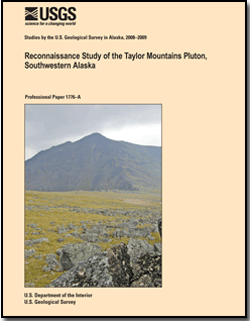U.S. Geological Survey Professional Paper 1776–C
ABSTRACT
Phosphatic rocks are distributed widely in the Lisburne Group, a mainly Carboniferous carbonate succession that occurs throughout northern Alaska. New sedimentologic, paleontologic, and geochemical data presented here constrain the geographic and stratigraphic extent of these strata and their depositional and paleogeographic settings. Our findings support models that propose very high oxygen contents of the Permo-Carboniferous atmosphere and oceans, and those that suggest enhanced phosphogenesis in iron-limited sediments; our data also have implications for Carboniferous paleogeography of the Arctic. Lisburne Group phosphorites range from granular to nodular, are interbedded with black shale and lime mudstone rich in radiolarians and sponge spicules, and accumulated primarily in suboxic outer- to middle-ramp environments. Age constraints from conodonts, foraminifers, and goniatite cephalopods indicate that most are middle Late Mississippian (early Chesterian; early late Visean). Phosphorites form 2- to 40-cm-thick beds of sand- to pebble-sized phosphatic peloids, coated grains, and (or) bioclasts cemented by carbonate, silica, or phosphate that occur through an interval ≤12 m thick. High gamma-ray response through this interval suggests strongly condensed facies related to sediment starvation and development of phosphatic hardgrounds. Phosphorite textures, such as unconformity-bounded coated grains, record multiple episodes of phosphogenesis and sedimentary reworking. Sharp bed bases and local grading indicate considerable redeposition of phosphatic material into deeper water by storms and (or) gravity flows. Lisburne Group phosphorites contain up to 37 weight percent P2O5, 7.6 weight percent F, 1,030 ppm Y, 517 ppm La, and 166 ppm U. Shale-normalized rare earth element (REE) plots show uniformly large negative Ce anomalies Ce/Ce*=0.11±0.03) that are interpreted to reflect phosphate deposition in seawater that was greatly depleted in Ce due to increased oxygenation of the atmosphere and oceans during the Carboniferous evolution of large vascular land plants. Black shales within the phosphorite sections have up to 20.2 weight percent Corg and are potential petroleum source rocks. Locally, these strata also are metalliferous, with up to 1,690 ppm Cr, 2,831 ppm V, 551 ppm Ni, 4,670 ppm Zn, 312 ppm Cu, 43.5 ppm Ag, and 12.3 ppm Tl; concentrations of these metals covary broadly with Corg, suggesting coupled redox variations. Calculated marine fractions (MF) of Cr, V, and Mo, used to evaluate the paleoredox state of the bottom waters, show generally high CrMF/MoMF and VMF/MoMF ratios that indicate deposition of the black shales under suboxic denitrifying conditions; Re/Mo ratios also plot mainly within the suboxic field and support this interpretation. Predominantly seawater and biogenic sources are indicated for Cr, V, Mo, Zn, Cd, Ni, and Cu in the black shales, with an additional hydrothermal contribution inferred for Zn, Cd, Ag, and Tl in some samples. Lisburne Group phosphorites formed in the Ikpikpuk Basin and along both sides of the mud- and chert-rich Kuna Basin, which hosts giant massive sulfide and barite deposits of the Red Dog district. Lisburne Group phosphatic strata are coeval with these deposits and formed in response to a nutrient-rich upwelling regime. Phosphate deposition occurred mainly in suboxic bottom waters based on data for paleoredox proxies (Cr, V, Mo, Re) within contemporaneous black shales. Recent global reconstructions are consistent with Carboniferous upwelling in northern Alaska, but differ in the type of upwelling expected (zonal versus meridional). Paleoenvironmental data suggest that meridional upwelling may better explain phosphorite deposition in the Lisburne Group. |
For additional information contact: This report is presented in Portable Document Format (PDF); the latest version of Adobe Reader or similar software is required to view it. Download the latest version of Adobe Reader, free of charge. |
Dumoulin, J.A., Slack, J.F., Whalen, M.T., and Harris, A.G., 2011, Depositional setting and geochemistry of phosphorites and metalliferous black shales in the Carboniferous-Permian Lisburne Group, northern Alaska, in Dumoulin, J.A., and Galloway, J.P., eds., Studies by the U.S. Geological Survey in Alaska, 2008–2009: U.S. Geological Survey Professional Paper 1776-C, 64 p.
Abstract
Introduction
Geologic Framework
Methods and Terminology
Geographic and Stratigraphic Variation of Phosphorites
Lithologic Features of Phosphorites and Associated Rocks
Less-Phosphatic Strata
Whole-Rock Geochemistry
Discussion
Acknowledgments
References Cited
one appendix